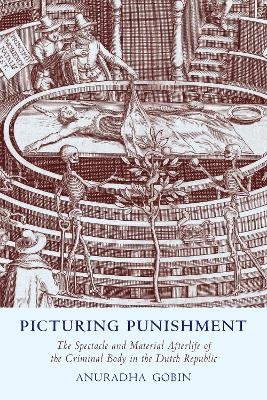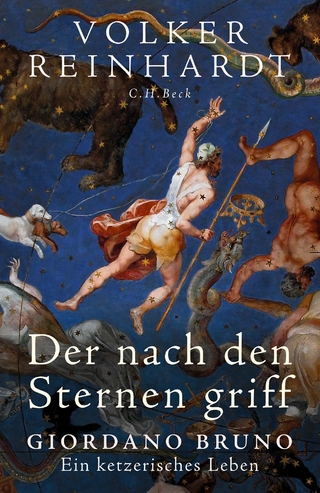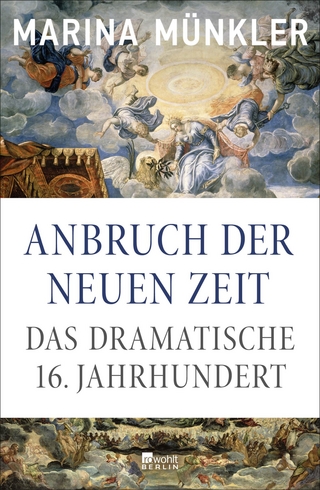
Picturing Punishment
University of Toronto Press (Verlag)
978-1-4875-0380-2 (ISBN)
- Lieferbar (Termin unbekannt)
- Versandkostenfrei innerhalb Deutschlands
- Auch auf Rechnung
- Verfügbarkeit in der Filiale vor Ort prüfen
- Artikel merken
Picturing Punishment examines representations of criminal bodies as they moved in, through, and out of publicly accessible spaces in the city during punishment rituals in the seventeenth-century Dutch Republic. Once put to death, the criminal cadaver did not come to rest. Its movement through public spaces indicated the potent afterlife of the deviant body, especially its ability to transform civic life.
Focusing on material culture associated with key sites of punishment, Anuradha Gobin argues that the circulation of visual media related to criminal punishments was a particularly effective means of generating discourse and formulating public opinion, especially regarding the efficacy of civic authority. Certain types of objects related to criminal punishments served a key role in asserting republican ideals and demonstrating the ability of officials to maintain order and control. Conversely, the circulation of other types of images, such as inexpensive paintings and prints, had the potential to subvert official messages. As Gobin shows, visual culture thus facilitated a space in which potentially dissenting positions could be formulated while also bringing together seemingly disparate groups of people in a quest for new knowledge.
Combining a diverse array of sources including architecture, paintings, prints, anatomical illustrations, and preserved body parts, Picturing Punishment demonstrates how the criminal corpse was reactivated, reanimated, and in many ways reintegrated into society.
Anuradha Gobin is an associate professor in the Department of Art at the University of Calgary.
List of Illustrations
Acknowledgments
Introduction
1. Structures of Power: Constructing and Publicizing the New Amsterdam Town Hall
Peace and Prosperity
Civic vs. Religious Dominance
Spectacle, Prestige, and Publicity
Public Access and Republican Virtues
2. Procession and Execution Rituals: Moving through the New Amsterdam Town Hall
The Iconography of Justice
Rituals of Justice behind Closed Doors
Public Ceremonies on Execution Day
3. Disposal and Display: The Criminal Corpse on the Gallows
Moving Executed Bodies
Spectacular Displays
Identity Formation at the Gallows
Undignified Decomposition and the Taboo of Touch
4. Subversion and Symbolic Transformation: Recreation, Ambush, and Humour at the Gallows
Ambushed Landscapes
Sexual Innuendo, Leisure, and Acts of Resistance at the Gallows
Grotesque Bodies
5. Serving the Public Good: Reform, Prestige, and the Productive Criminal Body in Amsterdam
Deriving Civic Good
Social Status and the Transformation of Anatomical Practice
Dr. Tulp’s Fame and the Criminal’s Reform
6. The Transformation of Touch: Flayed Skin and the Visual and Material Afterlife of the Criminal Body in the Leiden Anatomy Theatre
A Curious Attraction
Moralizing Values
Paaw’s Vesalian Methods
Interacting with Objects
7. The Symbolism of Skin: Illustrating the Flayed Body
Mythological Precedence
Properties of Paper and Parchment
Tactile Uncovering
Conclusion
Notes
Bibliography
| Erscheinungsdatum | 05.07.2021 |
|---|---|
| Zusatzinfo | 75 b&w illustrations and 25 colour illustrations |
| Verlagsort | Toronto |
| Sprache | englisch |
| Maße | 155 x 231 mm |
| Gewicht | 620 g |
| Themenwelt | Geschichte ► Allgemeine Geschichte ► Neuzeit (bis 1918) |
| Geschichte ► Teilgebiete der Geschichte ► Militärgeschichte | |
| Studium ► Querschnittsbereiche ► Geschichte / Ethik der Medizin | |
| Recht / Steuern ► Allgemeines / Lexika | |
| Recht / Steuern ► Rechtsgeschichte | |
| Recht / Steuern ► Strafrecht ► Kriminologie | |
| ISBN-10 | 1-4875-0380-6 / 1487503806 |
| ISBN-13 | 978-1-4875-0380-2 / 9781487503802 |
| Zustand | Neuware |
| Informationen gemäß Produktsicherheitsverordnung (GPSR) | |
| Haben Sie eine Frage zum Produkt? |
aus dem Bereich


